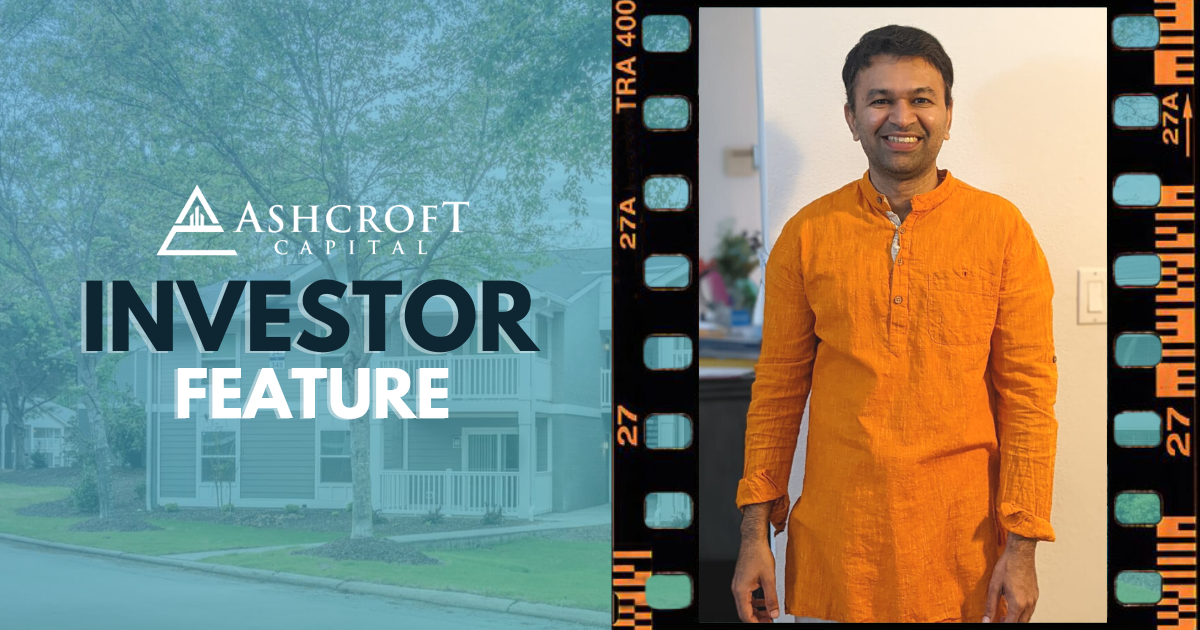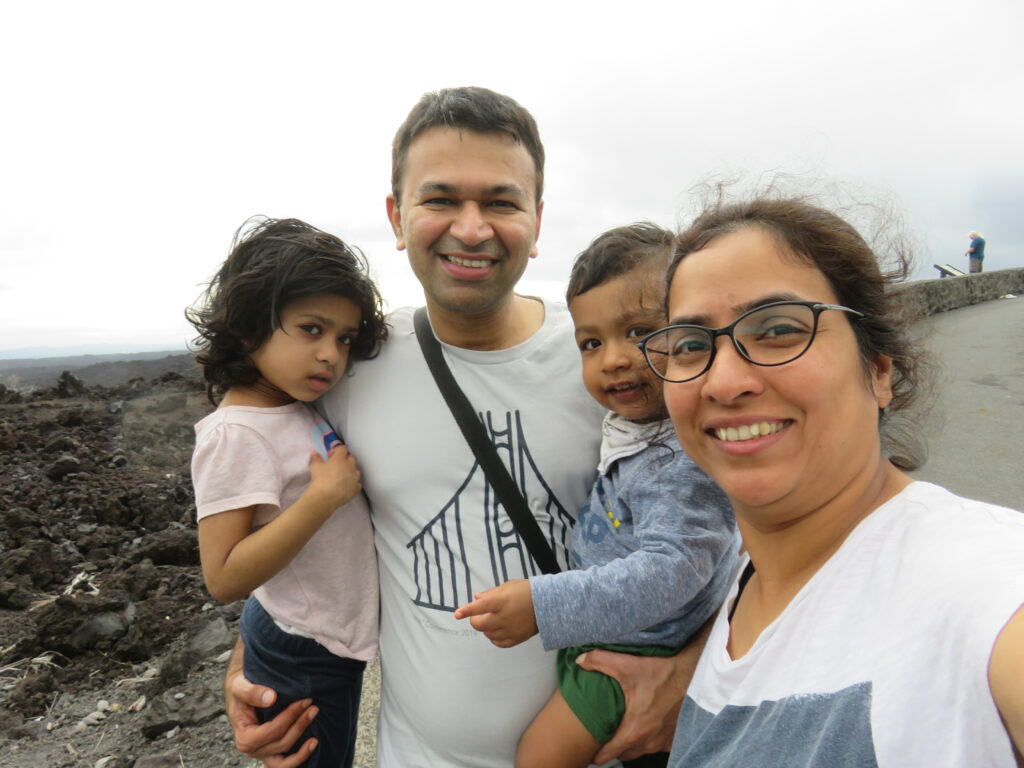April 11, 2023
At 41, Mukul Patil has just four years left on the clock. This Bay Area software engineer and father of two cracked the code for his early retirement by starting small in the stock market 15 years ago, then cultivating multiple sources of income and asset classes.
Mukul’s engineering mind is evident in his investment strategy and the way he thinks about his journey to finding Ashcroft. First, he starts simply with, “Why invest at all?”
“My goal is to not rely on a single source of income,” says Mukul. “Knowing if you lose your primary job that you would still have some income gives you confidence.” Although his skills are in high demand today, Mukul acknowledges that his comfortable, flexible job might not last forever. He finds a sense of safety in investing.
Searching for security in real estate
Tracking the next logical step, Mukul explains his investment path: “Now, why real estate? I started with the simplest investment class, and that’s stocks. And that’s the only class I invested in for 10 years or so,” he says. “When my portfolio grew, that’s when I started investing in other classes. If you have a smaller portfolio, it’s okay to take on the amount of risks that stocks have. A 50% drop is okay if you’re starting out and have $50,000, but if you have a million dollars and you lose 50% of that, it’s a much bigger setback. That’s what led me into real estate.”
Why syndications? Mukul started with a single family investment home but soon wanted to take advantage of the passivity and scale that syndications bring. “The goal is to not work for money! So if you’re still working on properties and have to be involved frequently, that defeats the purpose.”
Mukul brings his story to the present day. “Why Ashcroft? There are many things I like about Ashcroft compared to others.” Mukul encountered Ashcroft Capital when he sought recommendations for a reliable investment firm, and he was quickly impressed with our communications and client courtesies, like covering the costs of obtaining accreditation verification and handling 1031 filings. “With others, I hardly get emails every three months, and the content isn’t substantial—especially when things aren’t going well. That’s when you want to have more frequent updates and know what’s going on and happening next.”
“Whatever Ashcroft has promised or projected, they’ve done it. Compared with others that have not delivered on their promises, Ashcroft is good.”
Weighing the risks and riding the waves
Ashcroft’s personal touch and strategic approach align well with Mukul’s own view on investment, which is both personal and highly calculated. It’s clear he’s thought a lot about risk management and his tolerance for the ups and downs of the market.
“As far as risk appetite, that’s for each person to decide. With stocks, if you are willing to take on higher risk and stay invested for a long time, there’s a good chance you’ve mitigated the risk. Let’s say you’re invested in stocks, and they go down, but you know from historical data that it’s going to recover in 10 years. The next question is, can you sleep well for those 10 years when you are down? If you can, okay; otherwise, just go for asset classes with lower risk.”
“So it’s not really a dollar amount you get at the end. It’s how you feel throughout the journey. Are you worried; are you happy; are you excited?”
On this part of the journey, Mukul is actually quite happy despite a slowdown in the real estate market. “Last year things had grown so much that it made me think these asset classes are no longer fundamentally sound; they are just speculative. It made me think that I was investing in things that were just a bubble. I would say it’s a return to sanity, even though my portfolio has lost some of its gains. I’m happier now because I think we are on stronger fundamentals.”
Living mindfully on multiple income sources
Mukul’s patience and diligence have helped him engineer not just a more secure life today but an impressive early retirement at just 45. “I look at retirement in two stages: before 62 and after 62, when I can withdraw from my 401(k) and Roth IRA as well as social security. Before 62, I won’t have access to these, so I would live on savings, dividends, capital gains, selling stocks, and income from syndications.”
As far as how he’ll spend his retirement, there’s less engineering involved. “What I would do in retirement is the same thing I do today, just more slowly and mindfully. I’m lucky in that most of the things that make me happy don’t take up much money: reading books, going on hikes, camping. Rather than looking at my investments to fuel expensive hobbies, I would say they feed my regular expenses. I would rather cut a year off my retirement age than buy something.”
One expense Mukul does make room for is traveling. He wants to spend three months a year with his parents in India. “You only have 4,000 weeks in your lifetime, and you’re probably already out of 2,000. You might only meet your parents another 150 times,” says Mukul, illustrating his urgency to make his time count.
Thanks to well-engineered investing, the next 2,000 weeks of Mukul’s life should turn out exactly as he’s planned: “Everyday life would look like what you read about in one of those self-help guru books. I can do more things, but I’d really like to do the things I already do at a more leisurely pace. Being mindful of what you’re doing. Even if you’re just cooking—taking 10 more minutes. I think that’s a good way to enjoy life and be happy.”
Photographed below, Mukul Patil, wife Shweta Birwadkar and kids






